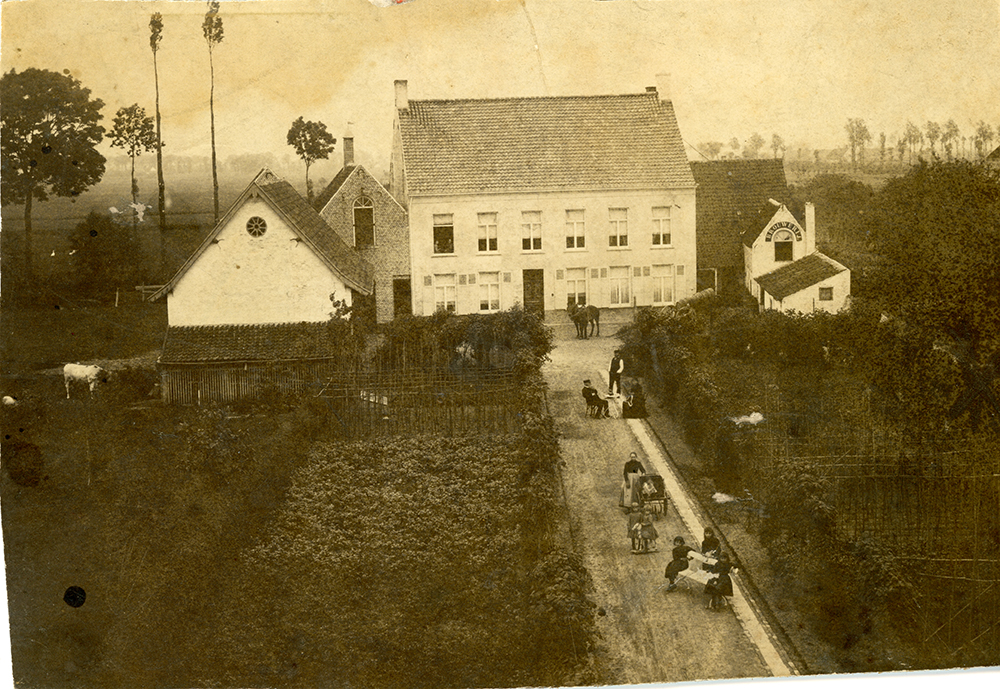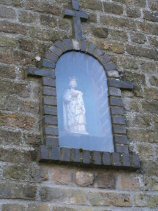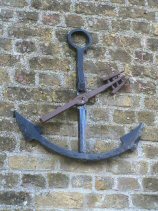Lo, abbey city
The early history of Lo reveals its origins as an abbey city. Augustinian monks lived here in the 11th century. By the grace of noble landlords, they obtained 500 hectares of landed property along with several buildings.
The region suffered from Protestant revolt against the Catholic Habsburg rulers, but when this part of the Low Countries was ruled by the Spanish empire, the fortunes of the monks were returned.
The Augustinians were prosperous enough to build an octagonal Dovecote with 1132 nest-boxes as a surprise gift for abbot Patricius Fraeys at his return from Rome in 1710. This tower is a unique feature of the hotel garden and is accessible through the walking path.
Malt-house and Brewery St.-Louis
During the French Revolution, while the French occupied the Low Countries, the Augustinians were prosecuted and the abbey was plundered.
When the parish was rebuilt, the church of the former abbey was left to the care of a parson and the remaining buildings were sold. The renovated dwellings of the abbey complex were obtained by the rich family Verlende in 1848. They successfully exploited the well-known malt-house and brewery St.-Louis. Lodewijk Verlende had been brewing until 1875 when his son Edward Verlende-Van Hee took over the business.

The brewery St.-Louis was expanded three times during the last quarter of the 19th century. To the existing brewery a malt-house was added in 1884 and a sugar drying house in 1895. The latter was converted into a milling house. Later, the brewery was led by Edward’s wife and his son Louis.
In 1931, Louis started to renovate the malting and brewing facilities, allowing the brewery to become one of the most important malt and beer producers in the area.
Inspired by the Flemish identity, Louis developed a new local beer after World War I and baptized it Zannekin. The increasing competition from large-scale breweries and a significant decline in beer sales eventually forced the family to quit the business.
1966
In 1966 the outbuildings were demolished and cleared. The domain was sold and a restaurant was established in the brewer’s house. Today, it is an accommodation for many British travellers on ‘pilgrimage’ to the historical sites of World War I, and a starting point for cyclists and hikers exploring the Westhoek.
Nowadays, a double glass door gives access to the reception, but the original front door of the Old Abbey is still in place as well. Above the original door there is a leaded window representing King Louis IX of France, who lived from 1214 to 1270 and was canonized in 1297. The small statue in the niche above the garage door also represents Saint Louis, the symbol of the brewery.
 The anchor at the wall is a keepsake of the L’Ancre d’Or brewery in Hoogstade which was owned by Alipius Augustinus Verlende (1736-1791), grandfather of Lodewijk (the founding father of the St.-Louis brewery in Lo in 1848).
The anchor at the wall is a keepsake of the L’Ancre d’Or brewery in Hoogstade which was owned by Alipius Augustinus Verlende (1736-1791), grandfather of Lodewijk (the founding father of the St.-Louis brewery in Lo in 1848).


An interesting fact: Lodewijk’s sister Amelia was married to Adolphus Destrooper. Their grandson was Jules Destrooper, who made the world-famous ‘Belgian Lukken’ cookies. The aroma of freshly baked cookies still greets visitors to Lo today.





